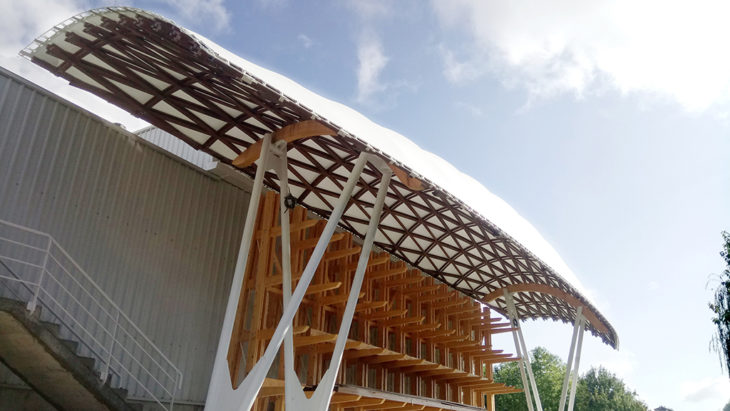
PEMADE Gridshell. Source: ETSAMadera
The Triaxial Gridshell of Eucalyptus is a prototype project by Antonio José Lara-Bocanegra, Almudena Majano-Majano, Antonio Roig Vena and Manuel Guaita developed within PEMADE (Platform of Structural Timber Engineering) in the University of Santiago de Compostela, Spain, in the frame of the program Lugo + Biodinámico.
Innovation
The project is a practical result of an academic research on elastic timber gridshells. Inspired by previous similar structures such as the one for The German Building Exhibition in Essen by Frei Otto, the triaxial timber gridshell is the first of its kind to be built in Spain permanently, and the first in the world built with the local Galician species Eucalyptus globulus L.
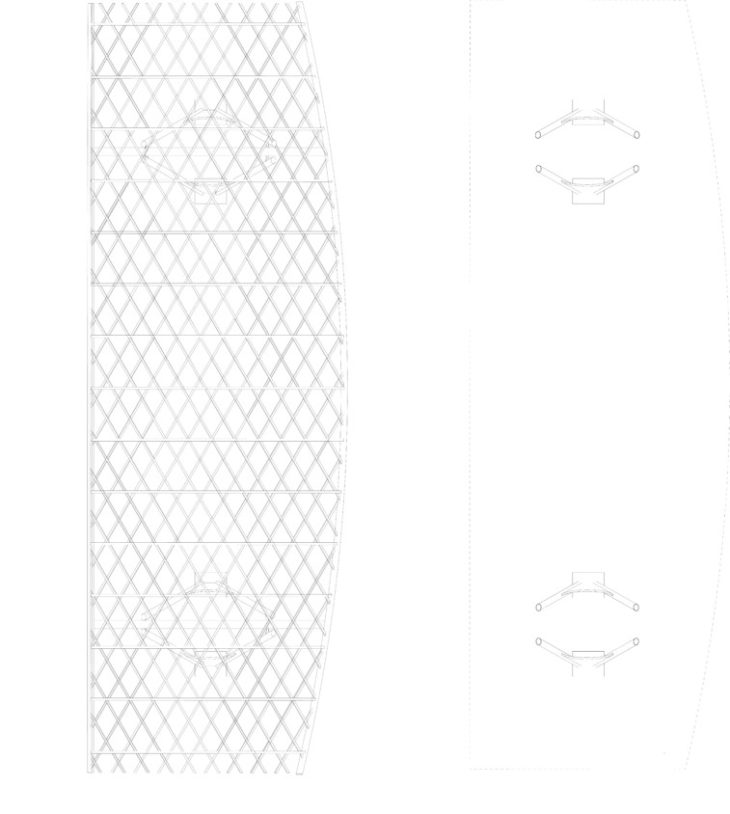
Floor plan. Drawing reproduced by Alexandros Kitriniaris & Maria Cotela
The structure covers a surface of 24×6.5 m2 dedicated to the storage of wooden elements in the Department for Structural Timber Engineering in the University of Santiago de Compostela. The 24-meter-long eucalyptus laths are arranged in curves using the compass method and are braced by transversal curved laths that stabilize the system. The gridshell is supported by two glulam arches of Pinus Radiata that rest on cylindrical steel columns separated 15m of each other. The supports are placed in the shorter sides of the gridshell. The structure is covered by a translucent white PVC tensile membrane that allows light transmittance but protects the timber from direct sun exposure, and enhances the overall aesthetic of lightness.
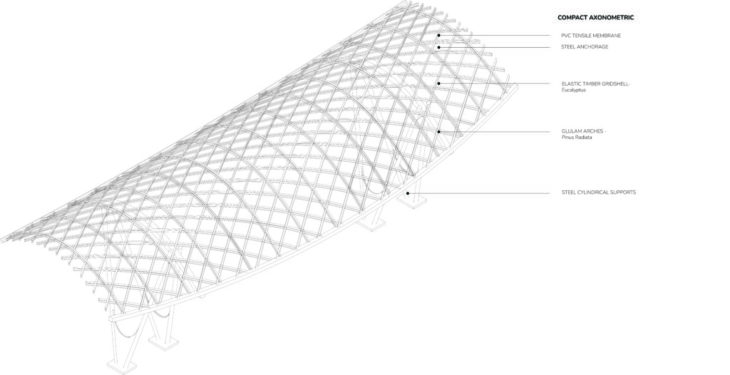
Axonometry of the Timber Gridshell. Drawing reproduced by Alexandros Kitriniaris & Maria Cotela
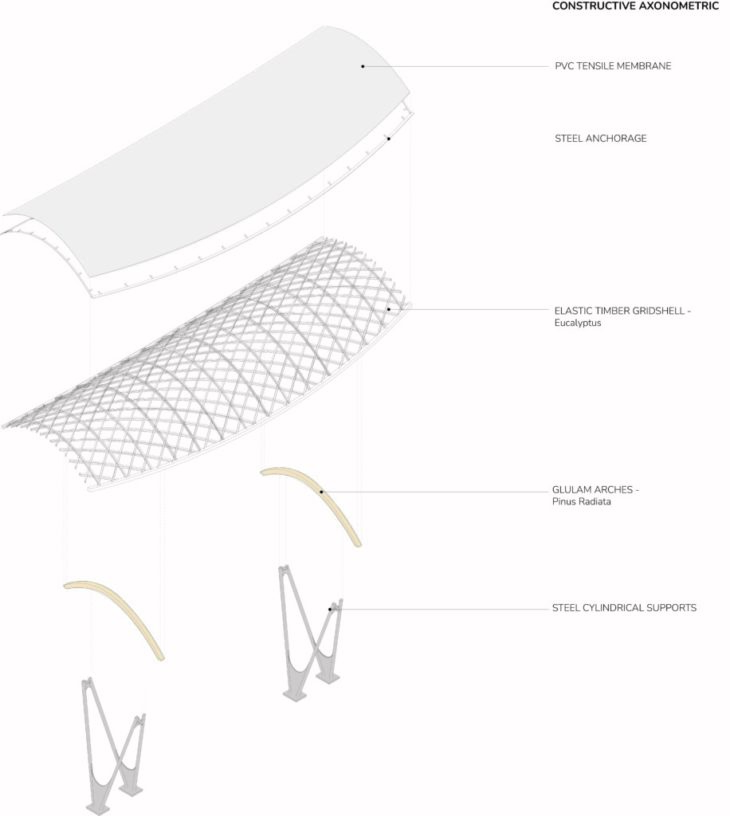
Constructive Axonometry. Drawing reproduced by Alexandros Kitriniaris & Maria Cotela
Design process
The design and construction of the gridshell was a process of successive iteration between architectural design and structural analysis. The authors developed five parametric algorithms that they used for the gridshell design. Before the construction process, different types of joints were tested to obtain long laths of Eucaliptus. First, a glued finger-joint to obtain lengths from 9 to 12 meters was tested using the break limits established by Eurocode 5. Then, a scarf joint was tested to be used on-site in order to obtain lengths of 24meters. Finally, a nodal connection between the two longitudinal directions and the transversal arches was designed. The nodal connection is essential to the successful structural performance of the structure. It transforms different layers of timber laths into a single layer and makes the whole structurally resistant and sound.
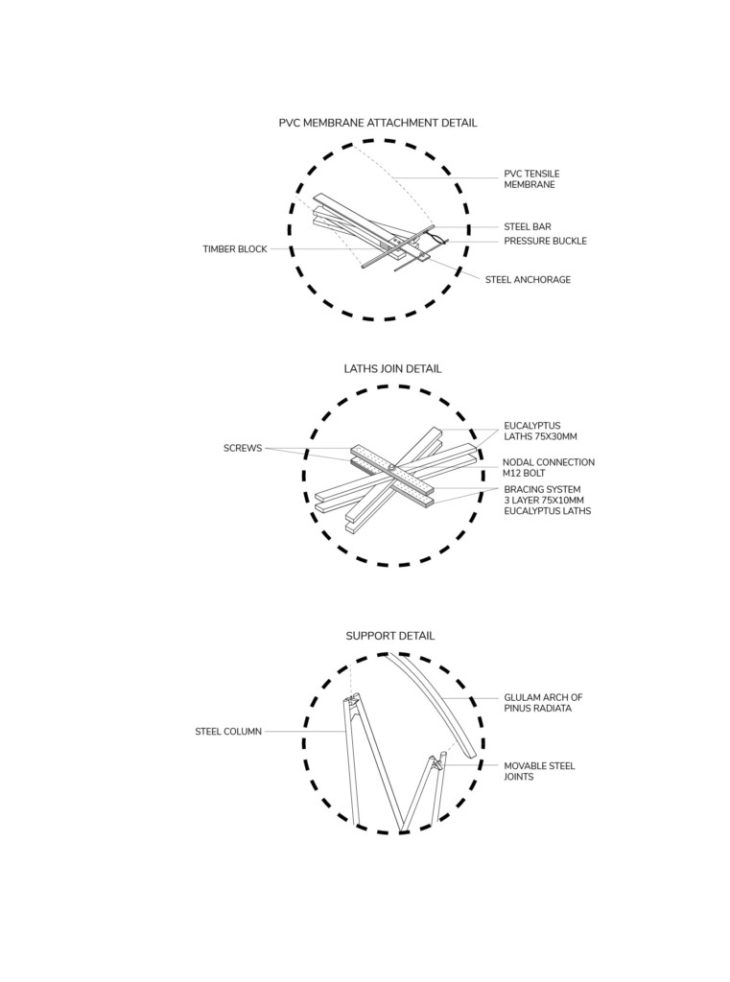
Constructive details.Drawing reproduced by Alexandros Kitriniaris & Maria Cotela
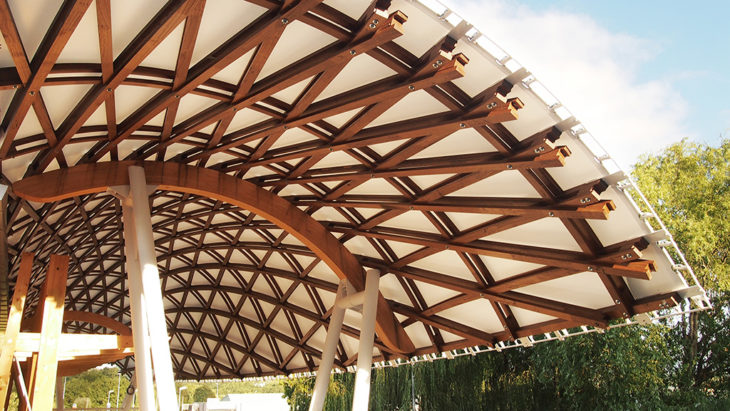
Eucalyptus Laths and PVC Membrane Close-up. Source: ETSAMadera
Quantitative Analysis
Within the MMTD Cases 3 course, we analyzed the different parts of the PEMADE gridshell and calculated how much timber was used for its construction. This quantitative analysis gives an idea of how many trees are needed to build this kind of structure and it is also a tool to compare this project to other timber structures. In this case, due to the thin laths, the calculation showed that roughly over one tree was used. Moreover, eight structures like this one can be produced per second of forest growth in Spain, which means 28.207.870 timber gridshells from Eucalyptus can be produced with the current forst growth in Spain.
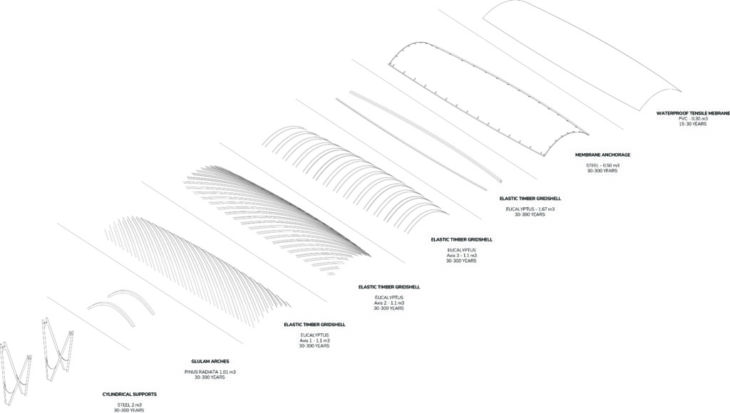
Material Ecology. Drawing produced by Alexandros Kitriniaris & Maria Cotela
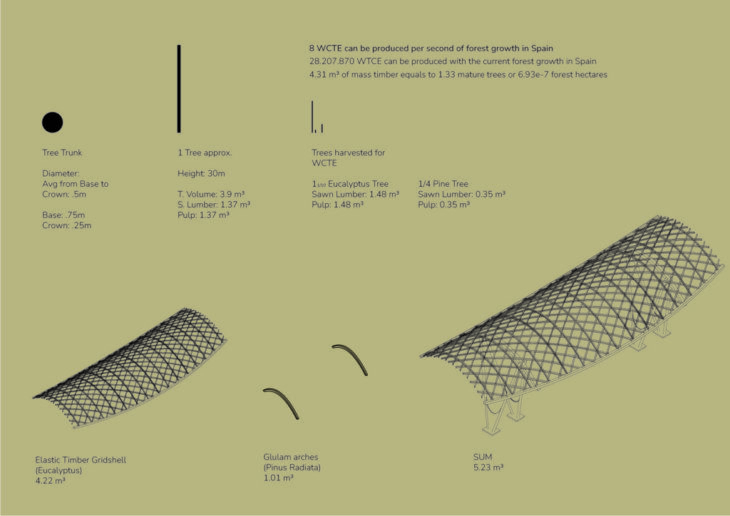
Quantitative Analysis. Drawing produced by Alexandros Kitriniaris & Maria Cotela
This project challenges the existing methods of elastic gridshells construction to obtain a prototype that allows standardization of pieces and connections using local materials to cover large spans.
To know more about the project, visit:
Case Study: Triaxial Gridshell of Eucalyptus is a project of IAAC, Institute for Advanced Architecture of Catalonia developed for MMTD in 2021 by students Alexandros Kitriniaris and Maria Cotela Dalmau. Faculty: Kya Kerner. Course: Cases